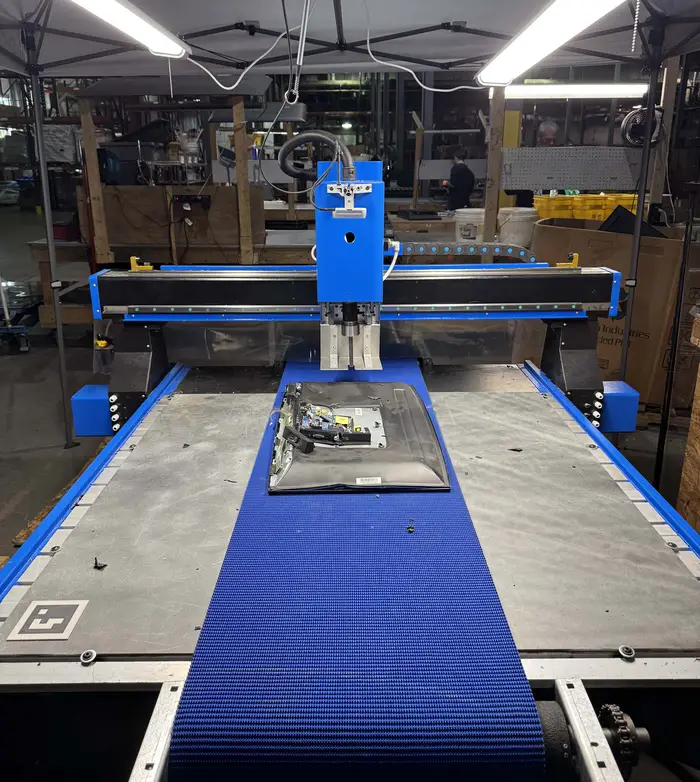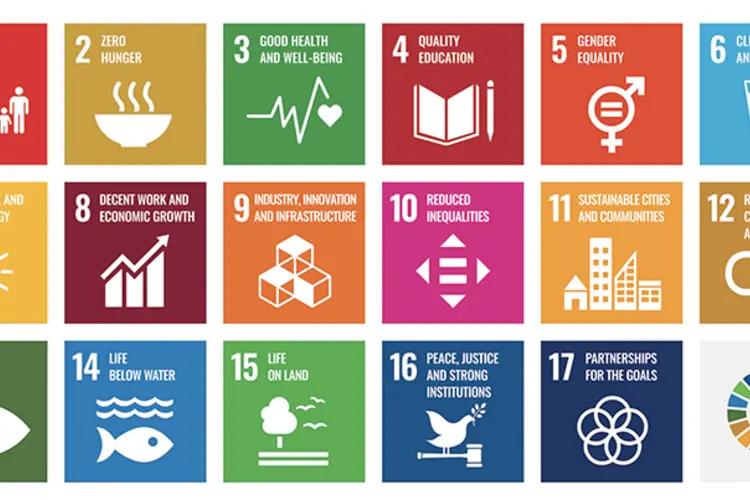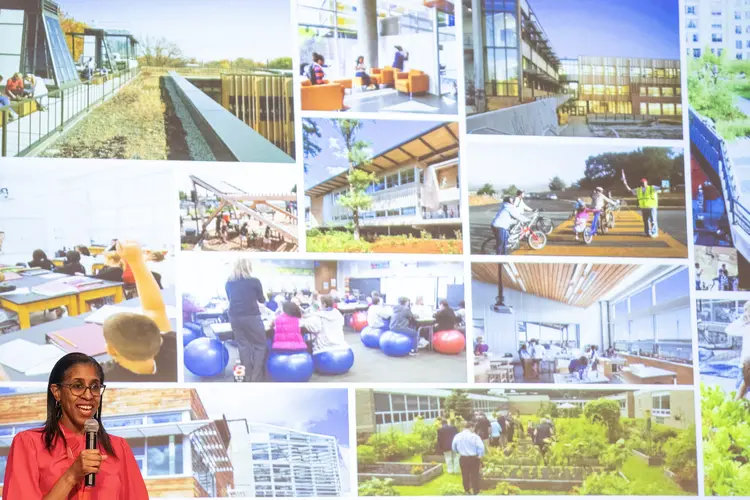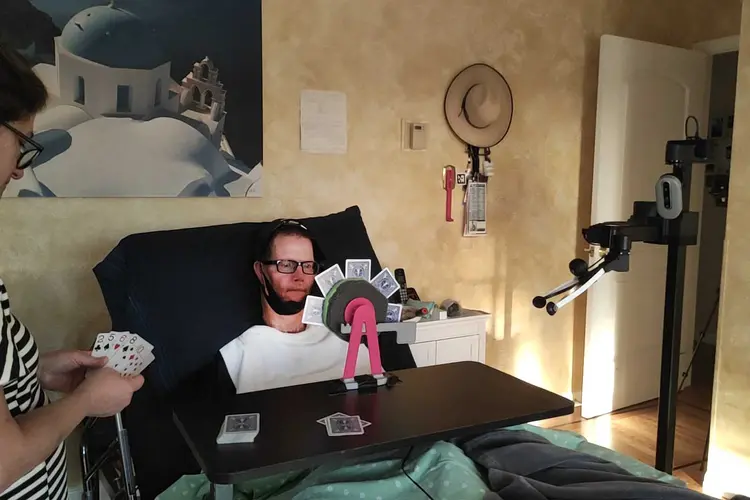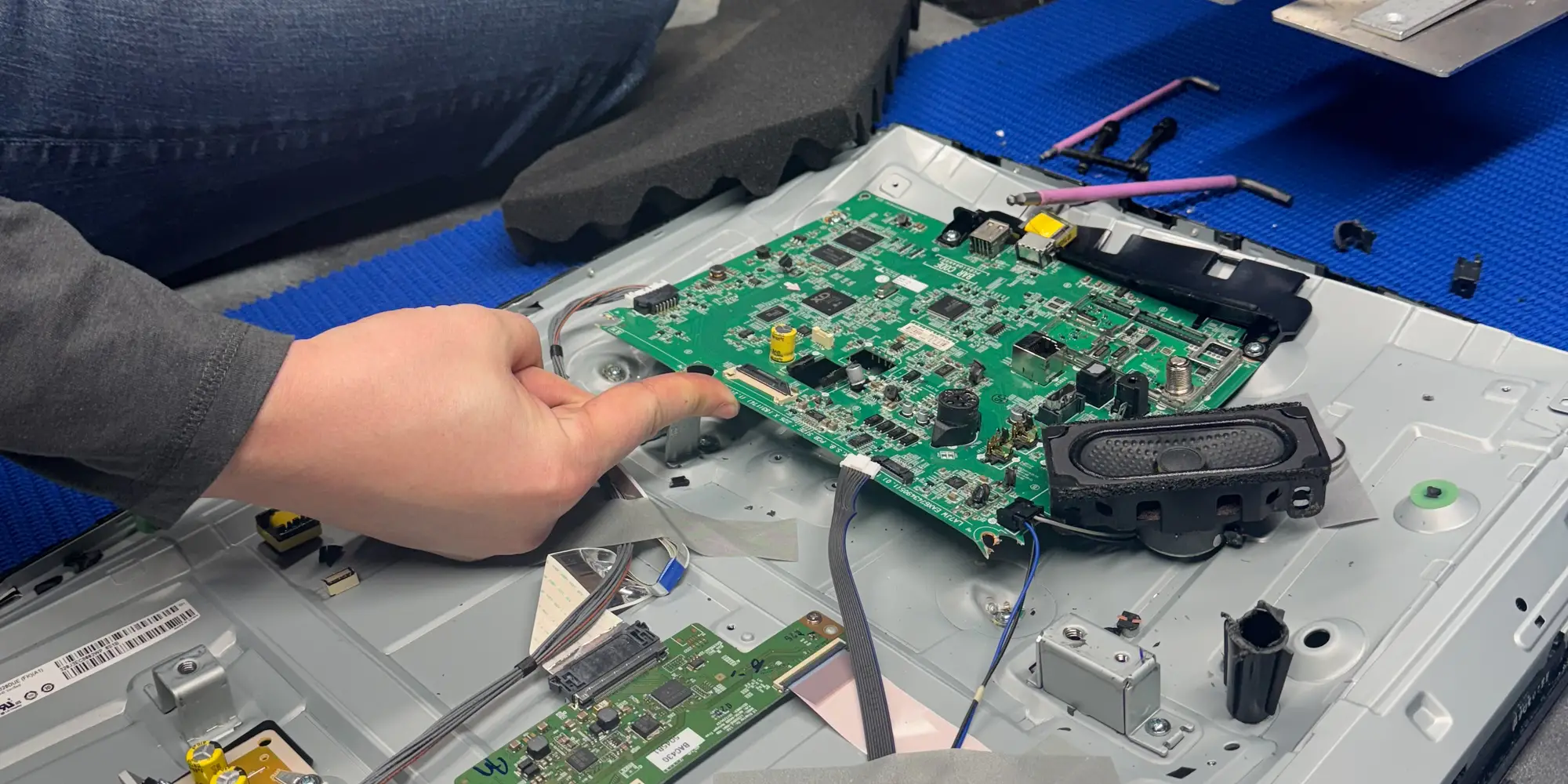
CMU Robot Works Inside E-Waste Recycling Facility
Inspired by Apple Research Partnership, roboLoop addresses electronics recycling challenges
Media Inquiries
A researcher from Carnegie Mellon University’s School of Computer Science(opens in new window) is using robotics to improve e-waste recycling.
E-waste is one of the fastest-growing types of waste in the world, with an estimated 62 million tons(opens in new window) produced in 2022 alone. But only about 20% of that was recycled. As reliance on tech devices grows, finding ways to salvage and recycle their components becomes critical.
Matt Travers(opens in new window), a senior systems scientist in the School of Computer Science’s Robotics Institute(opens in new window), has launched a new company, roboLoop, that uses technology inspired by his e-waste recycling research partnership with Apple to help disassemble flat-panel displays. roboLoop’s robot was recently installed at a facility in State College, Pennsylvania. The new robot speeds up e-waste recycling for flat-panel displays.
Flat-panel displays, Travers said, are one of the fastest-growing types of e-waste because they don’t have a large resale market.
“When your flat-panel display breaks down, you're not calling the TV repairman,” Travers said. “Instead, you buy another one. Then it becomes this problem of, ‘Now I have this display. What do I do with it?’ Everybody has some collection of screens that they've been trying to get rid of. They don’t know where to bring it, or what days garbage collection may take them.”
Currently, the roboLoop robot locates and removes screws from the backs of flat-panel displays, saving employees time at the facility and allowing a small team to move through disassembly more efficiently.
Travers has always been interested in using robotics to address societal issues, and his work has included efforts to develop and deploy search-and-rescue robots in natural disaster situations. His research to address e-waste began with an Apple partnership that launched six years ago. During the partnership with Apple, Travers and his team developed machine-learning models that enabled robots to teach themselves how to disassemble an unfamiliar device. The team first generated a 3D model of a phone by scanning it with a laser. Then they simulated cracks, cases or missing batteries to train the model to recognize the different conditions a device could be in when it arrived at a recycling center.
While smartphones might look similar on the outside, their internal layouts can vary widely. To address this issue, researchers needed to improve object classification — the first step in disassembly. RGB-X, a neural network developed as part of the CMU and Apple partnership, fused real and generated RGB images with X-rays of smartphones to train and improve object classification.
Travers said the research with Apple inspired what he’s now doing with roboLoop.
“We know that employing a model that uses previous data effectively is the solution. For example, with roboLoop, the robot’s artificial intelligence model has enough metadata to know with a certain probability that a TV arriving at the recycling center has between 32 and 35 screws in certain locations. It infers that data from prior knowledge,” Travers said.
The robot’s first task is removing external screws, but eventually it will extract screws from internal components and recover the rare materials — like indium — used in flat-panel displays.
roboLoop’s initial home in State College is a facility formerly operated by Western Pennsylvania-based e-waste recycling company eLoop. On Jan. 1, eLoop spun off the business to roboLoop, which is owned by Travers; Ned Eldridge, the CEO and founder of both eLoop and roboLoop; and Scott Thayer, the CEO and founder of Automap.
